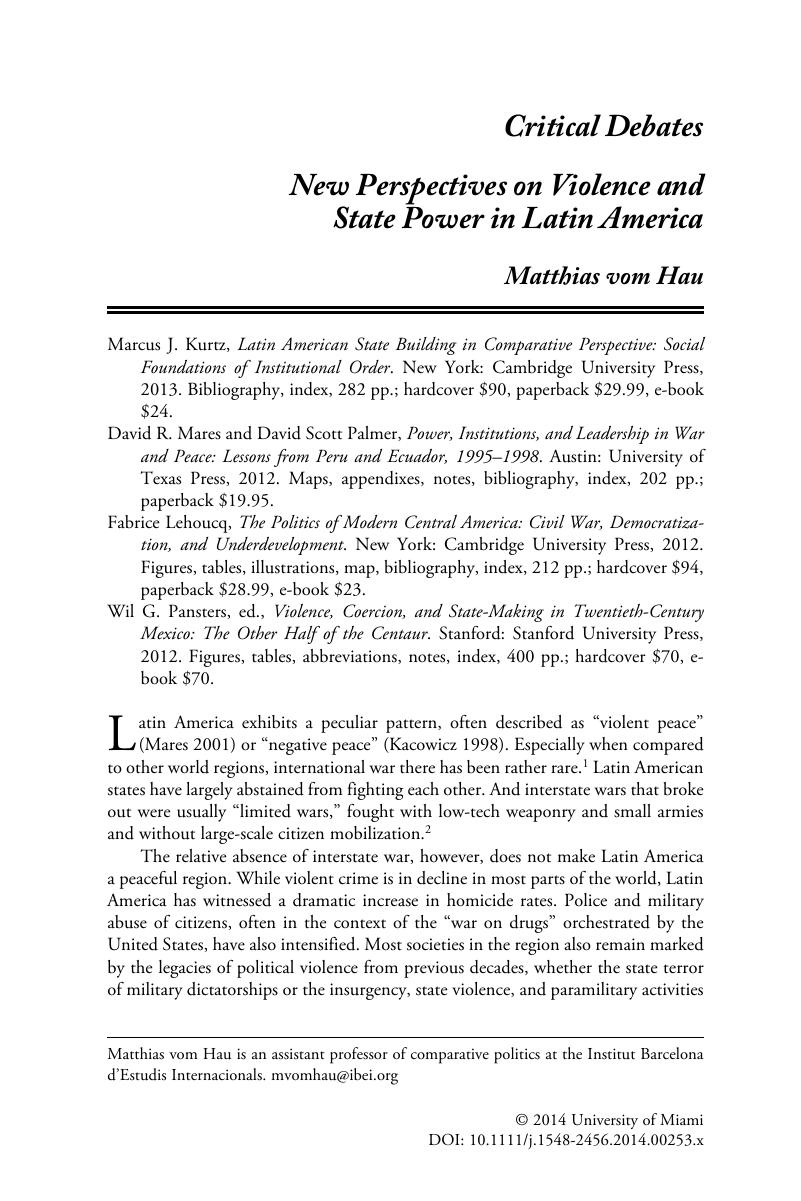Crossref Citations
This article has been cited by the following publications. This list is generated based on data provided by Crossref.
Schultze-Kraft, Markus
Chinchilla, Fernando A.
and
Moriconi, Marcelo
2018.
New perspectives on crime, violence and insecurity in Latin America.
Crime, Law and Social Change,
Vol. 69,
Issue. 4,
p.
465.
Koonings, Kees
and
Kruijt, Dirk
2023.
Hybrid violence and criminal governance in Latin America.
Social Sciences & Humanities Open,
Vol. 8,
Issue. 1,
p.
100623.



